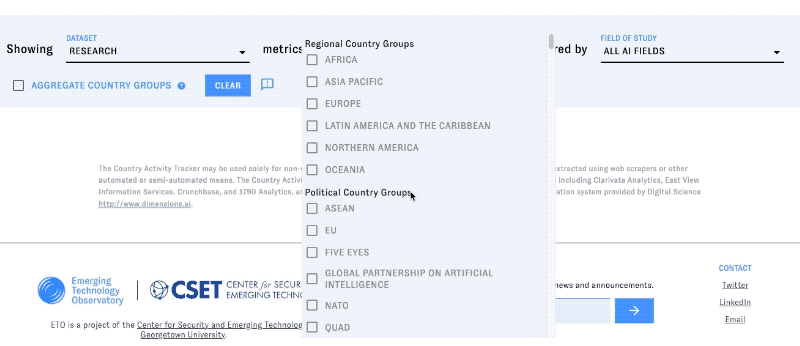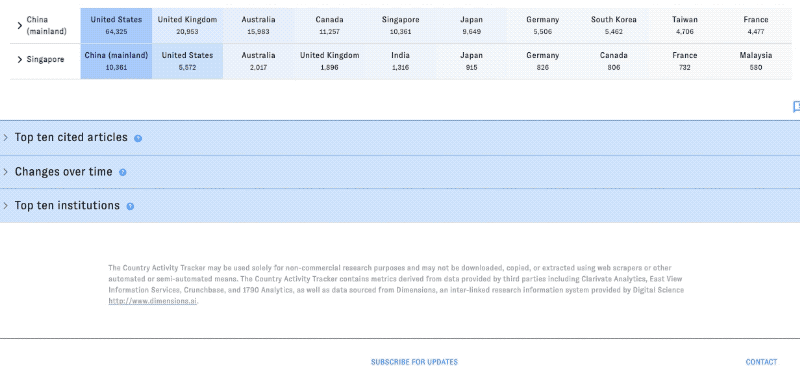Our Datapoints series brings you quick insights from ETO's data-driven tools and visualizations. This is the first post in the series.
By many accounts, Singapore is a hotspot for Chinese tech companies looking to hire, invest, and conduct R&D. In the late 2010s, big names in China's AI sector set up major outposts in the nation-state, including Alibaba, Huawei, and Yitu. "Some of China's biggest technology firms are expanding operations in Singapore as tensions rise between Washington and Beijing," the BBC reported in 2020. More recently, CSET analyses documented strong ties between China and Singapore in AI investment, research, and related domains.
We wondered whether we could detect similar trends with ETO tools, especially in the fast-growing field of AI. With so much Chinese activity in Singapore's AI sector - much of it focused specifically on joint R&D - we might expect rising collaboration between Chinese and Singaporean researchers. (For example, a Chinese company with a new local office might partner with a Singaporean university, or with a startup from Singapore's own active AI sector.) Is that happening?
To find out, let's turn to the cross-border tables in ETO's Country Activity Tracker, which make it easy to track AI research collaboration between authors in any countries you like. Add China and Singapore, then open the "Country co-authorship" tab to view the results:

The key points: China is Singapore's largest collaborator in AI research, with over 10,000 collaborative AI articles released since 2010 - almost twice as many as the next contender (the United States). And Singapore itself is China's #5 AI collaborator - not bad for a country of only 5 million!

What really interests us, though, is how this relationship may have changed over time. Click on Singapore's row in the collaboration table to pop out a graph showing recent trends:

Below, we've isolated data from this chart for Singapore's top four AI research collaborators (China, the US, Australia, and the UK) since 2016. Two trends stand out. First, Singapore-China collaboration is way up, increasing some 120% between 2016 and 2021. Second, Singapore-China collaboration is rising faster than Singapore's collaboration with the other nations. In fact, Singapore-US collaboration looks like it may have leveled off around 2020.
Next week, we'll see how Singapore compares to similar countries in its AI collaboration with China. Until then - check out the Country Activity Tracker at https://cat.eto.tech, or visit our blog for more explorations with CAT and our other ETO tools.

